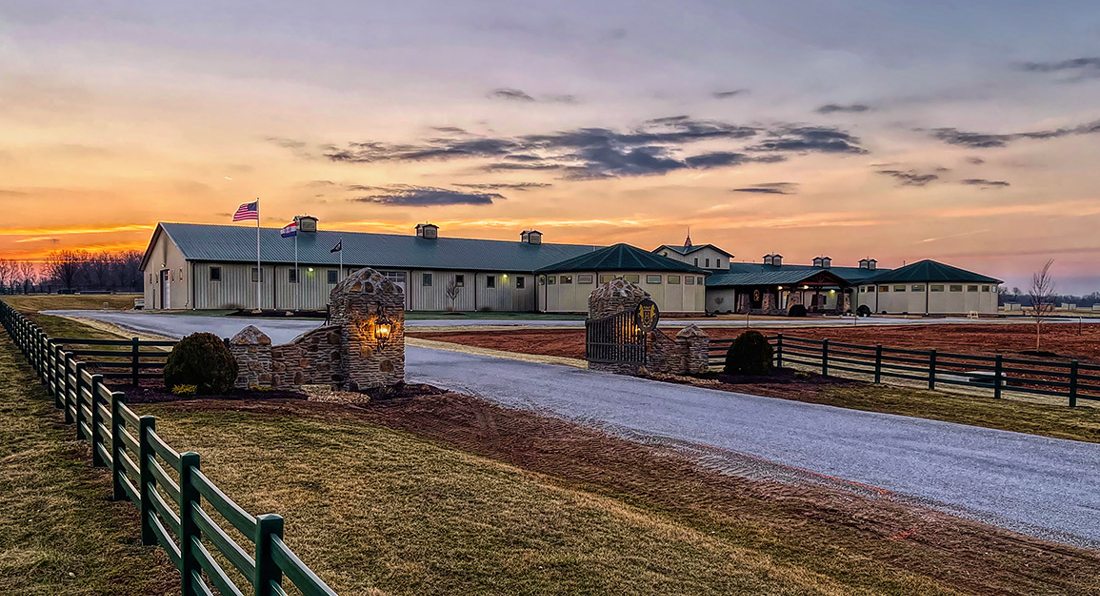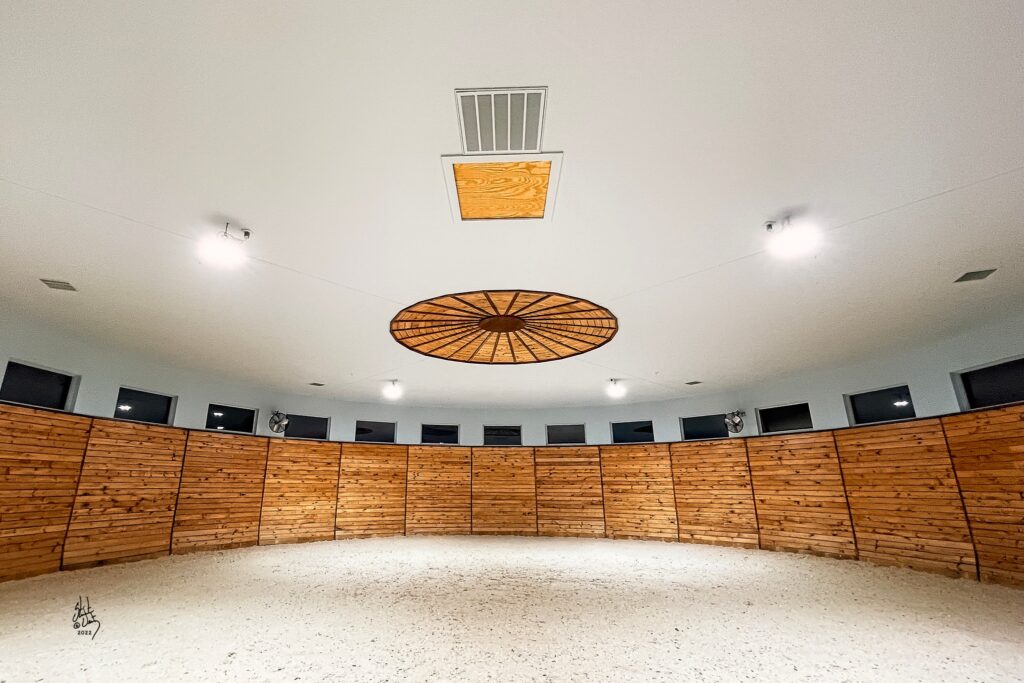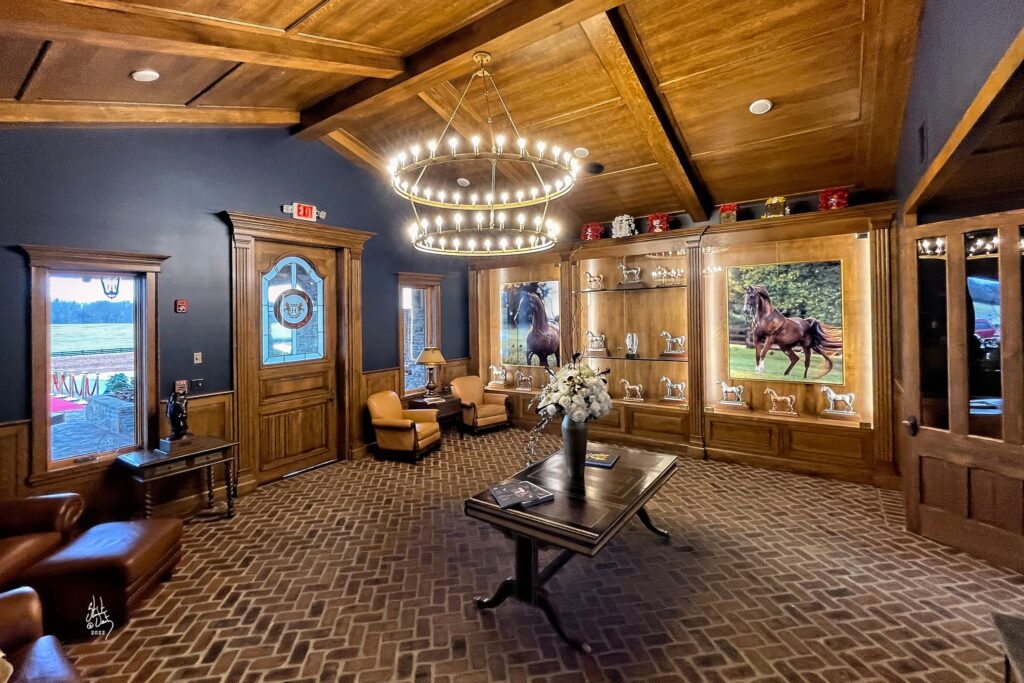
Anyone who has spent time around horses knows how important it is to have a functional facility to train, breed, and care for them. To learn more about building and operating a successful horse show barn, AHT interviewed Jen Wilson, the Director of Operations at Hagale Family Arabians. She is currently consulting on the construction of a new complex for the Hagales breeding operations.
Meeting The Needs
The new facility, Jen explains, will be utilized for breeding and starting prospects, containing two aisles of 18 stalls each for a total of 36. One row will house their up-and-coming 2- and 3-year-olds, and the other aisle will be home to mares and foals. Each stall will have a door that opens to the outside so that the broodmares and young horses are able to be easily turned out. Some unique features of the new building are an aqua-treadmill and a breeding lab. The main barn will remain the primary location for the training of their string of show horses.
Farm Essentials
When asked about her favorite farm features, Jen elaborated more on their breeding lab. Having this on-site and a vet on staff eliminates the need for travel and allows for the flushing of embryos and the collection of the Hagale’s seven stallions, making the breeding process more efficient.
Another unique element of the main barn is their dedicated vet and farrier workspace, providing a space for their trailers to be pulled indoors to work without distraction in a heated or air-conditioned environment.
A key part of their facility that they cannot live without, says Jen, is the hotwalker; which takes care of warming up muscles before a workout and cooling down the same afterward.
And, of course, an essential feature in any barn to keep everything in order and efficient is a storage area to organize blankets and supplies that are used daily such as tack, as well as a washer and dryer to throw dirty towels, blankets, and leg wraps in after a show.
Designing A Barn
Efficiency, Jen says, is the driving force behind the design of the Hagale’s training and breeding buildings. What a typical day on the farm looks like determined the design choices to allow day-to-day operations to run smoothly and economically. Everything is close together and easily accessible. In the training barn, 35 horses per day are worked, so it is imperative to make sure tack, grooming supplies, and equipment is readily available.
Most important is determining your end goal when thinking about constructing a barn, Jen advises, which should be the guiding force behind your design, be it creating a successful training and/or breeding program.
Ultimately, Jen says the Hagales’ goal is to better the Arabian horse industry for everyone, thus their doors are always open and visitors are welcome.
***
Arabian Horse Times also spoke to Lauren Krohn from Oak Haven Farms about their gorgeous facility in Bullard, Texas. Check back in a couple of weeks to hear about their key barn features!



